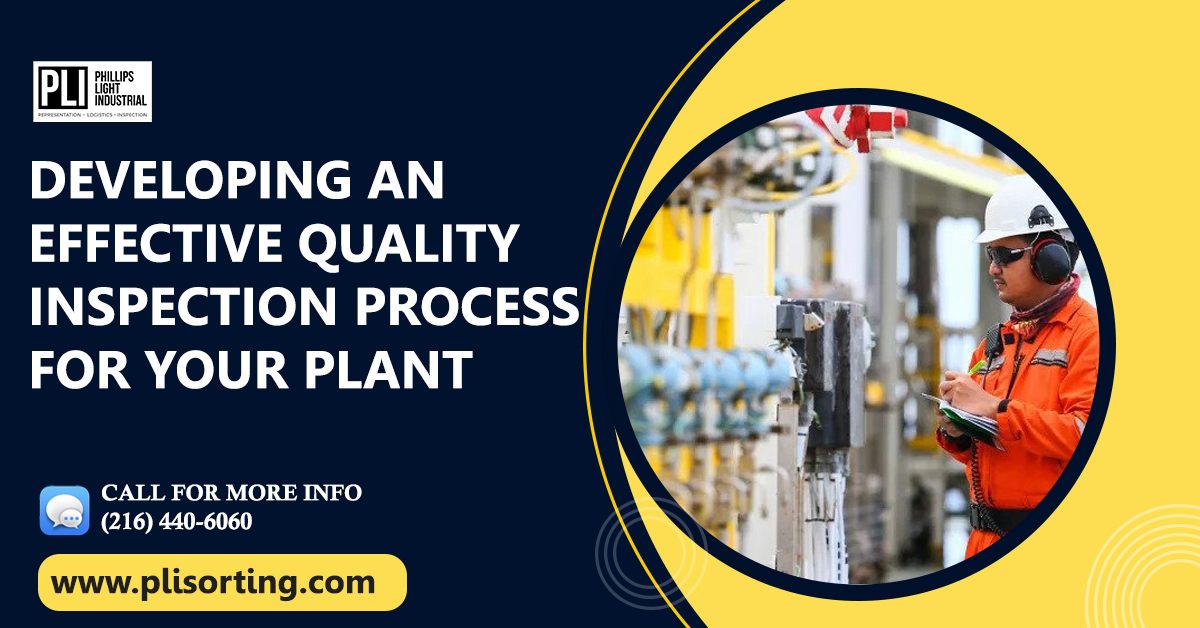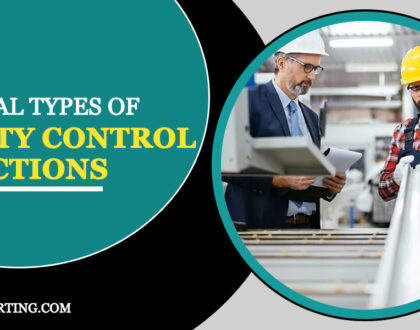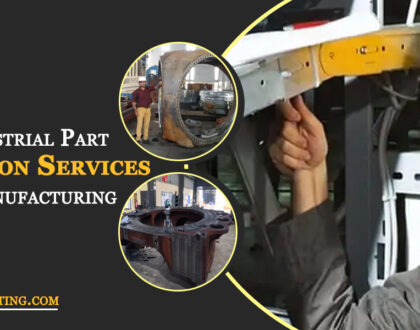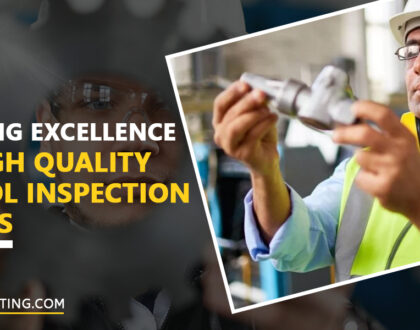Developing an Effective Quality Inspection Process for Your Plant

If you’re running a manufacturing plant, quality is one of the most important factors that you need to consider. Poor quality control can lead to costly product recalls, damaged reputation, and a loss of customers. That’s why developing an effective quality inspection process is critical to the success of your plant.
In this article, we’ll discuss how to develop a quality inspection process for your plant, including the benefits of quality inspections, steps to set up a process, and tips for making it effective.
Benefits of Quality Inspections
Quality inspections can help you detect defects in products before they reach customers, which can save you money in the long run. Here are some other benefits of quality inspections:
Reduce waste and improve efficiency: By catching defects early in the process, you can avoid wasting resources on defective products and improve the overall efficiency of your plant.
Increase customer satisfaction: Customers are more likely to be satisfied with your products if they are defect-free.
Ensure compliance with regulations: Quality inspections can help you ensure that your products meet regulatory requirements, reducing the risk of fines and legal problems.
Steps to Set up a Quality Inspection Process
Here are the steps to set up a quality inspection process in your plant:
Step 1: Define the scope of the process
The first step is to define the scope of your quality inspection process. This includes identifying which products will be inspected, how often inspections will be conducted, and what criteria will be used to evaluate product quality.
Step 2: Identify the inspection method
Next, you’ll need to decide how you will conduct inspections. This can include visual inspections, measurements, and tests. You should also determine who will conduct the inspections and how they will be trained.
Step 3: Set up the inspection area
You’ll need to set up a designated inspection area in your plant. This area should be clean and well-lit, with all the necessary tools and equipment to conduct inspections.
Step 4: Develop inspection checklists
Developing a checklist of inspection criteria is crucial to ensuring consistent and accurate inspections. You should include all the critical features of your products and document the acceptable ranges for each criterion.
Step 5: Establish inspection frequency
The frequency of inspections will depend on the product type and the level of risk associated with defects. You should establish a schedule for inspections that ensures products are thoroughly inspected without causing delays in production.
Step 6: Implement a reporting system
Once inspections are conducted, you’ll need to record the results and report them to relevant personnel. You should establish a reporting system that enables quick communication of inspection results and corrective actions that need to be taken.
Also, read about Third-Party Inspection: When and Why Do You Need It?
Tips for Making Your Quality Inspection Process Effective
Here are some tips to make your quality inspection process effective:
- Use statistical process control (SPC) techniques to monitor quality trends and make adjustments to the process as needed.
- Train inspectors on the inspection criteria and ensure they understand the importance of their role in the process.
- Conduct regular audits of the process to identify areas for improvement.
- Involve all relevant personnel in the process to ensure a comprehensive approach to quality control.
- Continuously review and refine the process to ensure it remains effective and efficient.
FAQs
How Often Should Quality Inspections Be Conducted?
The frequency of quality inspections depends on several factors, such as the type of product, the risk of defects, and the level of quality required. In general, inspections should be conducted regularly to ensure that products meet the required standards. However, it’s essential to balance the frequency of inspections with the need to maintain production efficiency.
What are some common inspection methods?
Some common inspection methods include visual inspections, measurements, and tests. Visual inspections involve looking for visible defects, such as scratches or dents, while measurements involve using tools to ensure that products meet dimensional specifications. Tests can include performance tests, durability tests, and environmental tests.
How can I improve my quality inspection process?
Continuous improvement is essential to maintaining an effective quality inspection process. You can improve your process by conducting regular audits to identify areas for improvement, implementing statistical process control techniques to monitor quality trends, and involving all relevant personnel in the process. It’s also crucial to continuously review and refine the process to ensure it remains effective and efficient.
Conclusion
Developing an effective quality inspection process is critical to ensuring the success of your plant. By implementing the steps outlined in this article, you can reduce the risk of defects and improve overall product quality. Remember to continuously review and refine the process to ensure it remains effective and efficient.
If you’re looking for quality plant inspection services in Cleveland, look no further than plisorting.com. Our experienced team can help you develop an effective quality inspection process for your plant. Contact us +1-(216) 440-6060)
Recommended Posts

5 Critical Types of Quality Control Inspections
July 25, 2023


